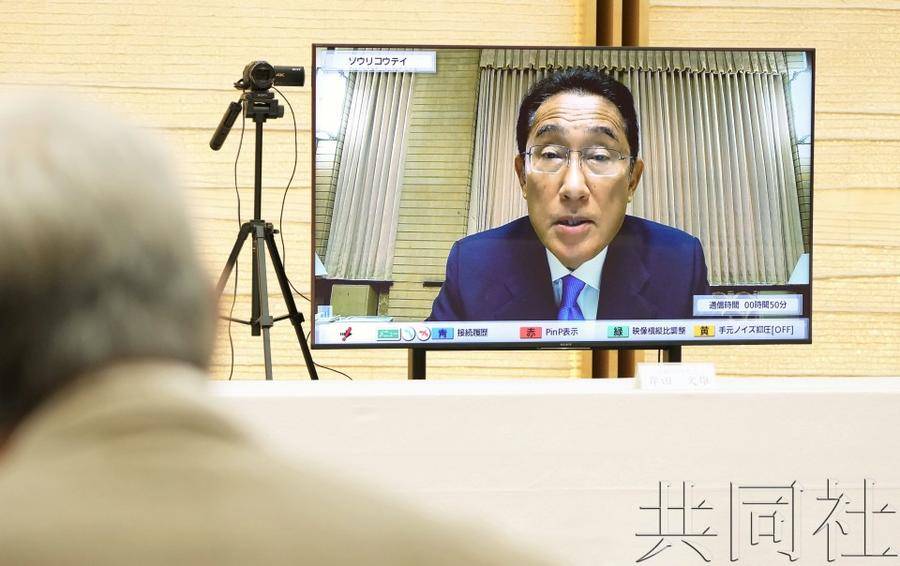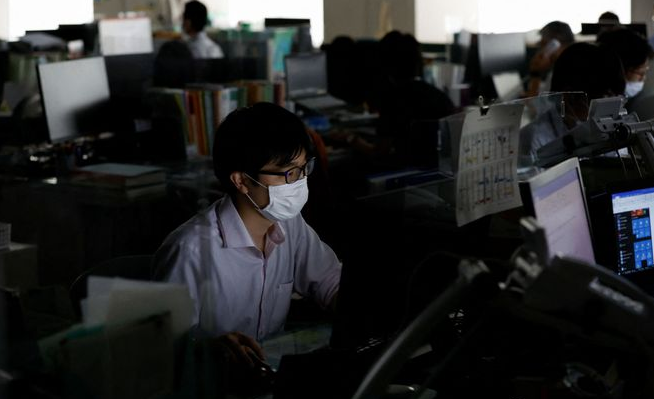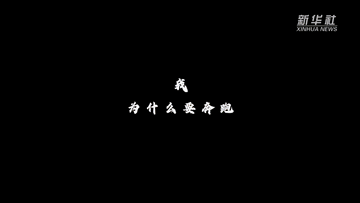Kan Tianxia | Japan's attitude turns greatly, why is the Kishida government nuclear power policy "run away"?
Author:Qilu Yiyi Time:2022.09.04
Reporter Zhao Shifeng
In order to overcome the energy crisis and ensure the stable supply of electricity in the future, the Japanese government announced the policy of building a new generation of nuclear power plants on the 24th, and considered the maximum operating period of 60 years of the existing nuclear power plant to further extend. In addition, Japan intends to restart the nuclear power unit that has been reviewed by the new security standards after next summer.

On the afternoon of August 24th, Japanese Prime Minister Kishita Kishita participated in the Green Transformation Conference online.
"Electric Wilderness" forced to restart nuclear power
The "March 11" earthquake in 2011 triggered the tsunami, which led to the melting core of the Unit 1 to 3 of the Unit 1 to 3 of the Fukushima Power Station of Tokyo Power Company, causing the most serious nuclear leak accident after the Chel Nobel nuclear accident. After the Fukushima nuclear accident, Japan suspended all nuclear power units, and set the operating period in principle 40 years, up to 20 years. At present, 10 of the 33 nuclear power units have been restarted. Although 7 units are in line with new security inspection standards, they are still suspended due to local government opposition.
The Japanese government held a meeting at the Prime Minister's residence on the 24th to discuss the plan to expand the scale of nuclear power production in the Economic and Industry. The Japanese government's announcement of the new plan is the first time since the Fukushima Nuclear accident has clearly advocated the construction of a new nuclear power plant. Japanese Prime Minister Kishita Kishi emphasized that "in order to restart the nuclear power plant, the government will take the lead in taking all measures", calling on policy makers and industry experts to consider "building a new generation of nuclear reactors with new security mechanisms" and "maximize the use of existing nuclear power stations." He said that he will follow the opinions of the Liberal Democratic Party and experts of the ruling party and strive for conclusions before the end of the year. Affected by this, the stock price of Tokyo Stock Exchange and nuclear power -related companies generally rose on the 24th, and Tokyo Power's stock price rose 9.8%.
Before the Fukushima nuclear accident, about 30 % of Japan's total power generation came from nuclear power plants. However, in Japan's total power generation in 2020, nuclear power accounts for only 4 %. In 2021, there was a recovery, and nuclear power accounted for 7.2%of the total power generation. The Japanese government hopes to increase the proportion of nuclear power to 20%to 22%by 2030. Before the Fukushima nuclear accident, Japan had launched eight nuclear power projects, but these projects were postponed after the accident.
This summer, high temperature weather continued to appear in many places in Japan, and Japan was facing "electric shortcomings". From late June to early July, the temperature in many places across Japan exceeded 40 ° C, constantly refreshing the highest temperature record. The temperature in the center of Tokyo has exceeded 35 ° C for 9 consecutive days, which is the longest number of days since statistics. After entering August, high temperature weather continues. While rare heat appears, due to the stopping operation of many nuclear power plants and the aging of thermal power stations, Japan's power supply is tight. Each power enterprise has launched a traditional thermal power station, but it still cannot eliminate the risk of power outage. Following 2015, the Japanese government launched a three -month national power -saving season on July 1 this year. Government organs demanded that the office lighting is turned off during the day. Essence

Japanese government agencies require off office lighting during the day.
Energy crisis reappeared in 1973
Due to the new crown epidemic and international situation, Japan's structural contradictions on coal and liquefied natural gas power generation are more prominent. The energy required by Japan depends mainly on imports. Recently, due to the rise in energy prices of international markets, import costs have soared, and the pressure of people's living pressure has increased. Kishida previously stated that the energy situation at the moment of Japan was urgent and may face the largest energy crisis since the petroleum crisis in 1973.
The fourth Middle East War that broke out in 1973 led to the first oil crisis. Japan, which has always relied on the Middle East oil to achieve rapid economic growth, was panicked like many developed countries with lack of resources in the world. Two months after the crisis, Kok, then Japanese Prime Minister Tanaka, said that "nuclear power is necessary, and there is no need to discuss this." The Japanese government raised funds through electricity bills to issue subsidies to the local governments where the nuclear power plant is located. Under the "national policy private" model, Japan has accelerated the introduction of nuclear power. After 20 years of the oil crisis, the number of nuclear power stations increased to 40.
In 1974, the Japanese government launched the "Sunshine Plan" to develop new energy technologies replaced by oil by 2000. To this end, the Japanese government configured sufficient budgets and personnel, which invested a total of 1 trillion yen at that time. Entering the first decade of this century, Japan has already taken the lead in the world's photovoltaic board market. After the Fukushima nuclear accident, the Japanese nuclear power policy was in a blank state, causing the Japanese nuclear energy industry for 10 years. With the termination of the "Sunshine Plan" subsequent project, the photovoltaic board industry also fell rapidly.
The Kishida government announced the draft plan of the "new capitalist" economic policy in May. It is planned to jointly invest 150 trillion yen by the government and enterprises within 10 years to realize the "decarburized society". Renewable energy and nuclear energy. The Japanese government has begun to comprehensively discuss the issuance of a new national debt called "Green Economic Transformation Bonds" to raise related funds for "decarburized".

In June this year, Gewei Village, Fukushima Prefecture resumed for the first time after the Fukushima nuclear accident.
The Japan Economic Group Federation believes that in order to achieve carbon neutrality in 2050, Japan must increase the use of nuclear power. The province of Japan's Economic and Industry decided on the 24th to decide the budget of the 2023 fiscal year was 139.14 trillion yen (about 70 billion yuan), an increase of 13.7%from the original budget of the 2022 fiscal year. Among them, 206.5 billion yen used to build a management system for stable supply, restarted nuclear power plants, and the development of new generation nuclear power plants. After the Fukushima nuclear accident, most Japanese refused to use nuclear power, but in view of Russia and Ukraine's conflict and energy prices, the idea of the Japanese people was also changing. Recently, the polls show that most people in favor of more useful nuclear energy for the first time.
Japan's oil, coal, and natural gas dependence rely on 88%. In the context of the new crown epidemic, Japan's Economic and Industry believes that the tension of power supply and demand may be long -term, and the amount of solar power in winter will decline. It may be further intensified.
At present, the yen has depreciated sharply, and the price of crude oil and natural gas has risen. The price of the Dutch TTF in Europe's natural gas benchmark in mid -August is about 250 euros per MWh, a higher price of March after the outbreak of Russia and Ukraine. The price of natural gas benchmarks in Asia, Japan, and South Korea has risen about double this year. At present, it is about $ 60 per million British thermal units, almost four times a year ago.
According to Kyodo News, a joint venture between Tokyo Electric Power and Central Electric Power Corporation in Japan revealed on the 26th that the new operation company has signed a contract with the "Sahalin No. 2" natural gas project established with Russia. "Sahalin No. 2" liquefied natural gas is long -term contracts and relatively low prices. As a power generation fuel and urban gas raw material, it accounts for nearly 10 % of the total amount of imported natural gas imports in Japan.
From the "Sahalin No. 2" to purchase liquefied natural gas, Tokyo Gas, Kyushu Electric Power, Northeast Power and Western Gas have been discussed. The Japanese company Mitsui Property and Mitsubishi Commercial, which participated in the "Sahalin No. 2" investment, have decided to continue to participate in new operating companies, and the Japanese government has also supported it.
The soil of the Fukushima nuclear accident.

Aiming at the new nuclear power technology
According to Japanese media reports, the new generation of nuclear reactors mentioned in Kishida includes small modular reactors and high -temperature gas -cooled reactors. Small modular reactor is a new generation of reactors developed by the world today. It can improve security with a structure that can cool without relying on power supply. Due to most of the equipment in the factory, the construction period is shortened to reduce the construction cost.
Small reactors are different from the traditional model of remote transportation electricity that requires huge investment and establishing remote transportation power supply networks. In the future, it may change the power supply method mainly based on large -scale power stations. NUSCALE POWER, a emerging company specializing in the development of small modular reactor technology, has estimated that the cost of building a small reactor power station in the United States is less than 3,000 US dollars per kilowatt, which is almost half reduced compared with the cost of large reactors.
According to the "Japan Economic News", NUSCALE POWER's No. 1 power station will be opened in Edaho, northwest of the United States in 2029. The reactor safety shell giant, Japan IHI Co., Ltd., jointly invested in NUSCALE POWER to promote the development of safety shells and strive to obtain NUSCALE POWER orders in the Yokohama plant.
Mitsubishi Heavy Industries is developing a small reactor with 300,000 kilowatts of power. It has begun to discuss the initial design with large power companies in Japan last year. Toshiba is conducting a study of high -temperature gas reactors. This reactor has attracted much attention due to the cooling of the pyrethon and can be built in a place where the cooling water is insufficient.
Countries around the world are advancing the development of small reactors. Britain has positioned nuclear energy as one of the pillars of the "Green Industry Revolution" and plans to build 16 small reactor power stations in 20 years to create 40,000 jobs. Russia has achieved practicality of the "floating -floating" small reactor. In May 2020, the Russian National Atomic Energy Corporation opened the world's first floating nuclear power plant "Academician Romonoov" in the Far East Chokic Autonomous Region. 50 % of the energy demand in the area. Russia will also start four ship -type nuclear power plants with small reactors after 2027.
On July 16th, Matsuni Koichi (second from left), the chief official house of Japan's cabinet, inspected the Fugui First Nuclear Power Station.

In order to further increase the value of nuclear power generation, Japan is considering re -investing in the development of sea water uranium technology. Japan once led the world in the technology of sea water uranium, and the basic research has progressed to the level of only "one step away" from the perspective of practicalization. According to Japanese media reports, the use of the current light water reactor technology to extract nuclear power stations in the seawater is essential for uranium. Theoretically, it can be used for mining for 60,000 years. Japan, which is fully dependent on imported uranium, can be described as "a thousand profits".
However, due to the strong voice of Japan's domestic opposition to nuclear power, the implementation of new nuclear power policies still face a lot of resistance. The Gongming Party, which is in charge of the Liberal Democratic Party, is cautious about the new nuclear power plant. In the Senate election in July, the Gongming Party proposed that it will strive to move towards a society that does not rely on nuclear power in the future.
From a technical point of view, the main difficulties of restarted nuclear plans include price competition for large nuclear power plants, high costs, and high costs, and there are price competition with cheap and renewable energy.In particular, how to ensure the safety of nuclear power facilities and reassure the public, there are still huge questions.Even if the Japanese government proposes to build a new nuclear power plant, it is unknown whether the investment of power companies can be promoted.In addition, the new nuclear power plant and small heap technologies to be demonstrated are still in the international development or experimental operation stage. Safety and efficiency need to be tested by time.Coolopov, a researcher at the Russian Strategic Research Center, believes that Japan may not be able to put into production in large new nuclear power plants before the 1930s. It takes several years to draft technical documents, obtain licenses, and find the source of funds.
News clue report channel: Download the "Qilu One" app, or search for the WeChat mini -program "Qilu One Point", 600 journalists in the province are waiting for you to report online!
- END -
One month after the shooting tragedy, the United States decided to demolish and rebuild the incident in the incident.

Jimu Journalist Song QingyingIntern Yang Xingnan19 elementary school students and ...
Xinhua Quan Media+| Running

Why do I run?Because I have to run to save more time, because the police emblem ab...